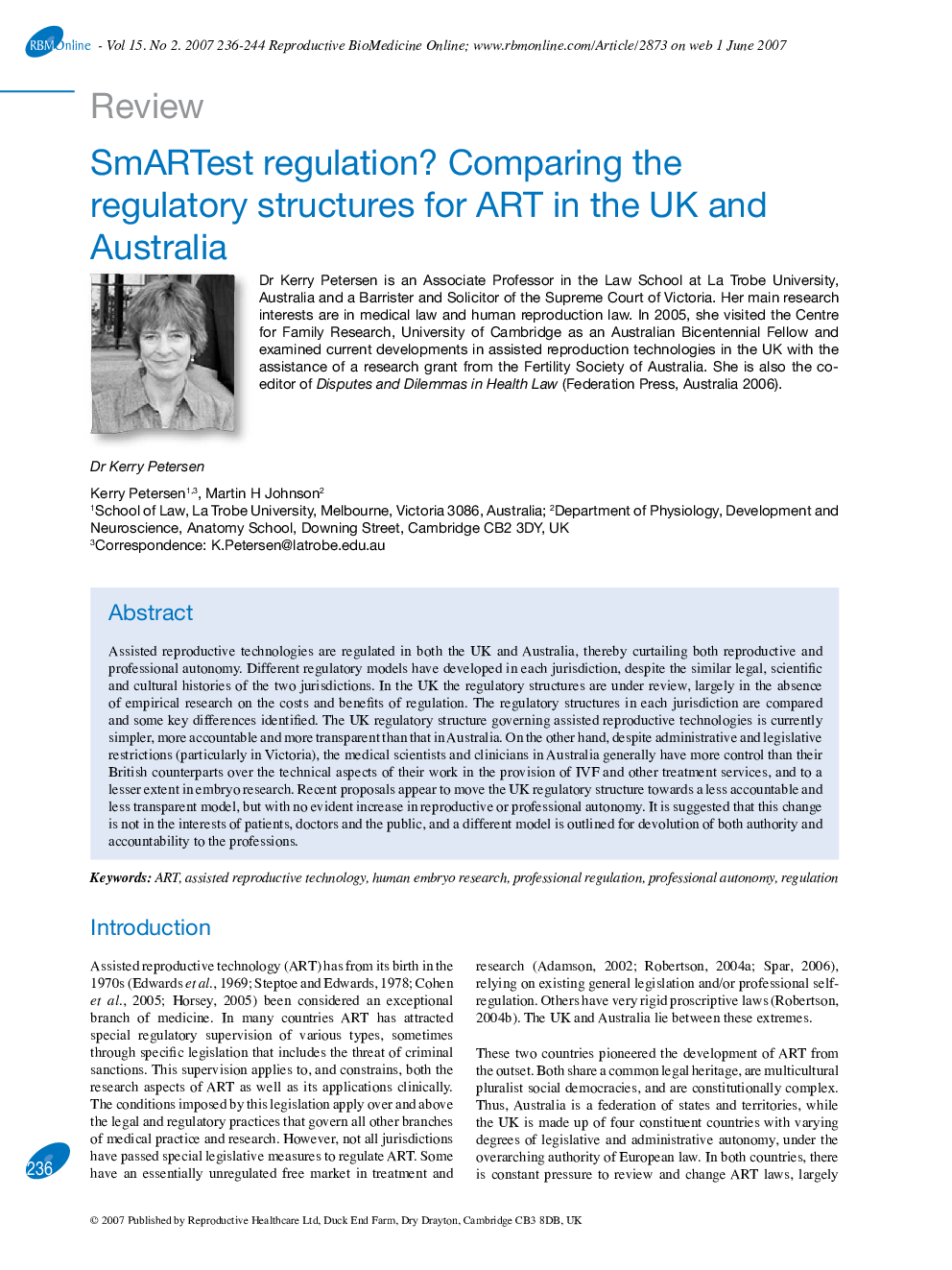| Article ID | Journal | Published Year | Pages | File Type |
|---|---|---|---|---|
| 3972638 | Reproductive BioMedicine Online | 2007 | 9 Pages |
Assisted reproductive technologies are regulated in both the UK and Australia, thereby curtailing both reproductive and professional autonomy. Different regulatory models have developed in each jurisdiction, despite the similar legal, scientific and cultural histories of the two jurisdictions. In the UK the regulatory structures are under review, largely in the absence of empirical research on the costs and benefits of regulation. The regulatory structures in each jurisdiction are compared and some key differences identified. The UK regulatory structure governing assisted reproductive technologies is currently simpler, more accountable and more transparent than that in Australia. On the other hand, despite administrative and legislative restrictions (particularly in Victoria), the medical scientists and clinicians in Australia generally have more control than their British counterparts over the technical aspects of their work in the provision of IVF and other treatment services, and to a lesser extent in embryo research. Recent proposals appear to move the UK regulatory structure towards a less accountable and less transparent model, but with no evident increase in reproductive or professional autonomy. It is suggested that this change is not in the interests of patients, doctors and the public, and a different model is outlined for devolution of both authority and accountability to the professions.
